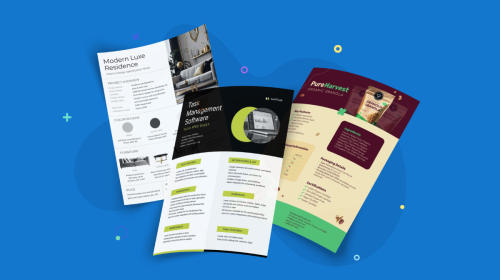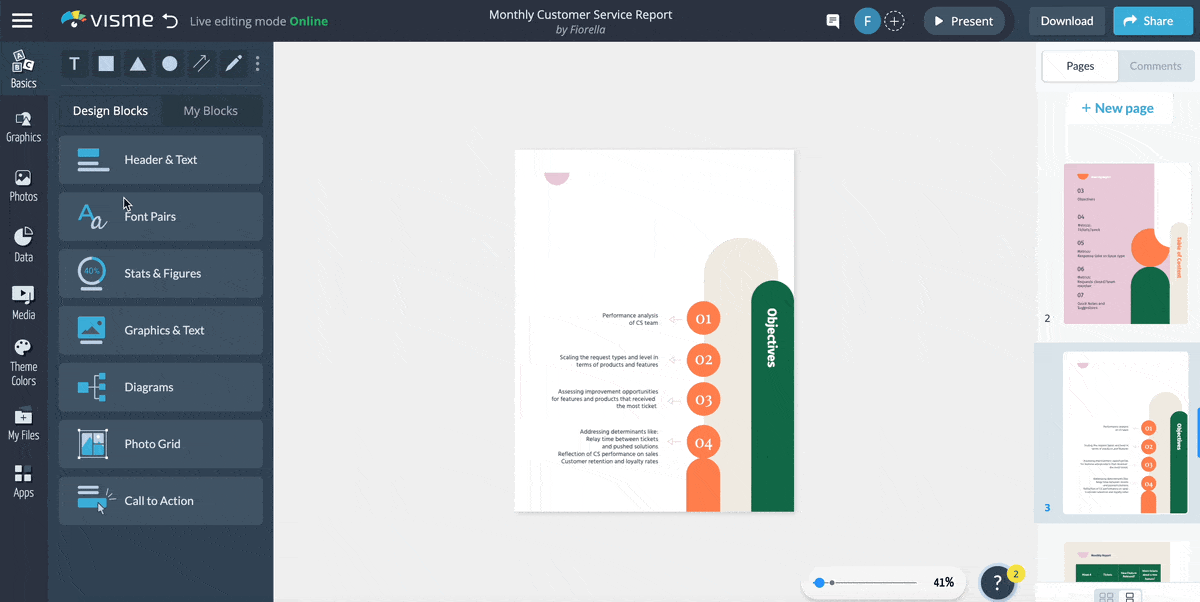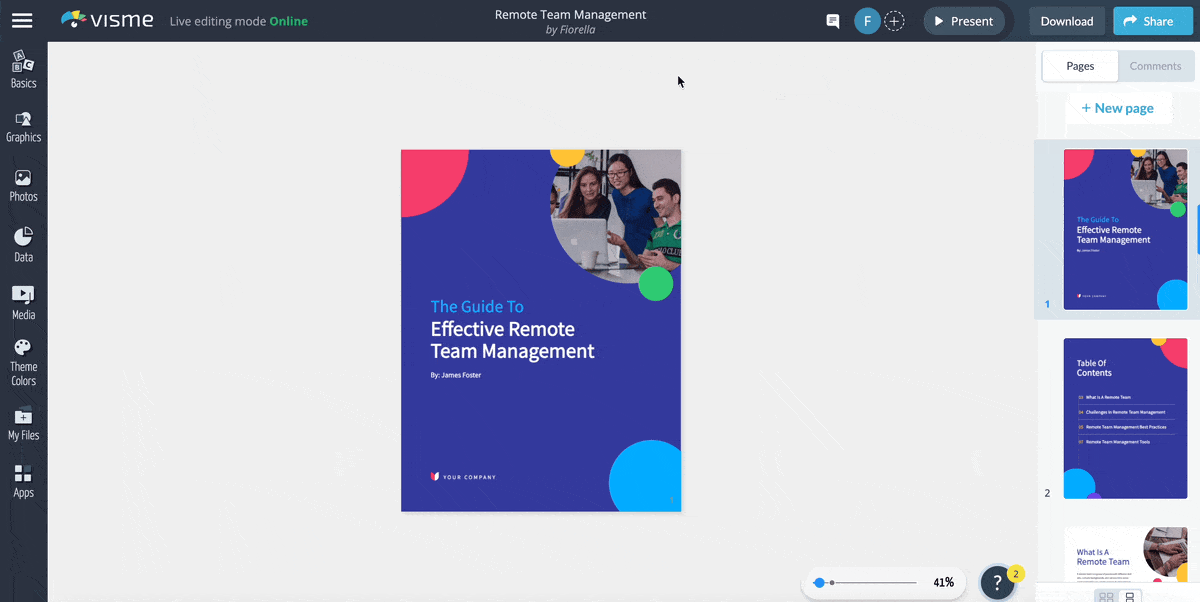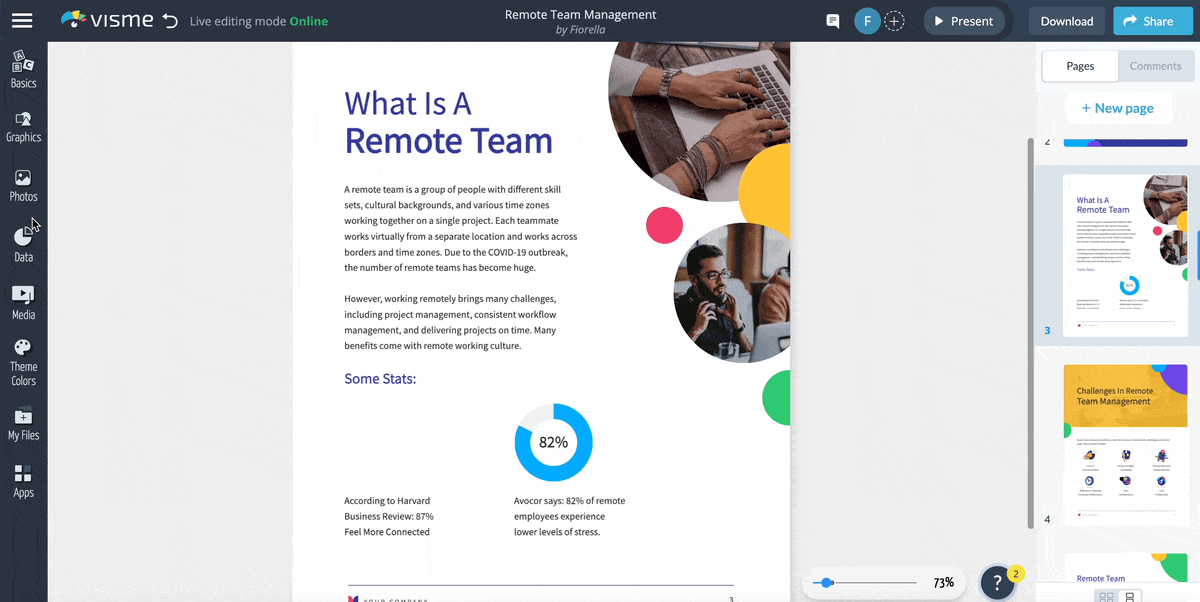
10 Best Templates to Successfully Track Project Management KPIs


Did you know that organizations waste more than 11% of their resources due to poor project management?
Some of the major causes of these failures include cost overruns, poor communication, resource management and project tracking.
One way to keep your system robust and efficient is to monitor your KPIs (key performance indicators). They help you understand how your project is faring and identify ways to get better results out of your campaign or strategy.
This article will explore templates for tracking various project management KPIs. Using these templates, you can maximize your resources for managing your projects and ensure they are on track to meet their goals.
A project management KPI is a metric agreed upon at the start of a project and used to monitor performance throughout the project life cycle. Monitoring multiple KPIs help your team make data-driven decisions and necessary adjustments to achieve project goals and objectives.
You can use KPIs to measure various aspects of your project, like team performance, individual productivity, product quality and customer satisfaction.
When deciding on project KPIs, ensure they’re S.M.A.R.T., a framework for developing well-defined and realistic goals. They should also let you measure your progress towards those effectively.
Here’s how:
A perfect example of a S.M.A.R.T. KPI for project management is to increase the number of completed customer support tickets by 20% in the next quarter.
The KPI focuses on a particular project area: customer support tickets (specific) and aims for a 20% increase (measurable). It also strives for a realistic target based on the resources and constraints of the project (achievable) and is directly related to the project's goal of improving customer support (relevant). Finally, the KPI has a specific deadline set for the next quarter (time-bound).
Ultimately, what makes a good KPI is its ability to provide valuable insights into the progress of the project and its ability to drive positive change, which is what the S.M.A.R.T. framework helps you achieve.

Different businesses use various KPIs to measure their performance. So, identifying the right key indicators to track is necessary to achieve your project goals more effectively.
Made with Visme Infographic Maker
That said, below are different KPIs for project management to choose from:
Some organizations assess the progress of a project based on how long it takes to complete or reach a goal. If you also prioritize time in your project management, you must measure KPIs that help you understand why a project finished on time or has a delay and what you can do to improve things.
Examples of timeliness KPIs in project management include:
1. Cycle Time - Measures the time necessary to complete a specific task or process in the project development process. It is helpful where there are a lot of different functions that are being repeated in your development process.
2. Schedule Performance Index (SPI) - Refers to the ratio of earned value to planned value and helps to determine if the project is ahead of or behind schedule. It is calculated as EV / PV, where EV is the earned value and PV is the planned value.
3. Lead Time - Identifies the time spent completing a project from start to finish, including all the steps involved. This KPI helps identify bottlenecks in the project and improve overall efficiency.
Keeping in line with your budget lets you properly monitor and assess the project’s financial performance. The KPIs here ensure that you complete the project within budget and that resources are allocated effectively.
Here are a few examples of budget KPIs in project management:
1. Cost Variance (CV) - Computes the difference between the actual cost of the project and the budgeted cost. It is calculated as CV = EV - AC, where EV is the earned value and AC is the actual cost.
2. Budgeted Cost of Work Scheduled (BCWS) - Takes into account the budgeted cost of the work scheduled to be completed up to a specific point in time. It helps track the progress of the project against the budgeted cost.
3. Return on Investment (ROI) - Measures the financial return on project investment. It is calculated as Net Profit / Total Investment x 100, where Net Profit is the total revenue generated from the project minus the total cost of the project while Total Investment is the total cost.
If you want to track and assess the quality of the project deliverables, you must set KPIs, ensuring that your organization meets the required standards and are of high quality.
Examples of quality KPIs in project management include:
1. Defect Density - Measures the number of defects found in a project deliverable per unit of measurement, like lines of code or pages of documentation, to identify project areas requiring improvement.
2. Customer Satisfaction - Gauges the level of satisfaction of the project's customers with the deliverables. Every company’s goal is that its project deliverables meet the needs and expectations of the customers.
3. First Pass Yield - Computes the percentage of deliverables that pass the quality control process on the first attempt. From here, you can identify which part of the process produces the most failures and which needs improvement.
Effectiveness in project management refers to the degree to which a project achieves its objectives and delivers value to stakeholders. If upper management is happy with the project results, the overall process used to achieve them is effective.
Below are metrics you must use to measure effectiveness in project management:
1. Resource Utilization - Measures the effectiveness of project resources by tracking how they are being utilized for billable work, where they are allocating their time, and how often they are being used.
2. Stakeholder Satisfaction - Monitors the level of satisfaction of the project's stakeholders with its deliverables and outcomes.
Let’s face it: what are KPIs for if you don’t know how to measure them? Knowing the importance of tracking your product management KPIs is one thing. It’s another thing to actually do it.
And therein lies the problem: project managers in some companies don’t track their KPIs in real time. It’s not an excuse that you and 54% of organizations don’t know how to track them as the project happens, either.
If you’re having problems monitoring yours, Visme templates are here to help.
They look great out of the box and can make you look great to your team and upper management. Choose a template from the list below, edit it using Visme’s drag-and-drop editor and you’re all set!
More importantly, you can create project management reports and charts in minutes, so you have more time for other important parts of your business.
“Some templates you stumble upon and are blown away that someone put the time and effort into creating them and you did not know you needed them in your life until that minute,” says graphic designer Lorens.
Below are some of the best Visme templates you can use for managing your projects:
If stakeholders request regular project reports from you, use this template. Aside from being able to summarize your week, it lets you break the project down into the goals you achieved based on your KPIs.
In this case, you can show the number of customers acquired and the revenue generated over the past seven days using this template.
If you’re required to show a monthly report for your project, this template provides stakeholders with all the details they need. It lets you dig deep into your project’s KPIs to show how effective your overall performance is. You can also mention notes at the end of the report and recommendations on addressing each note appropriately.
Part of creating effective monthly reports is to use images that match your presentation. Now, if you can’t find images from our stock images that go well in your reports, create them using Visme’s AI image generator. Write a description and the preferred styles for the image you want Visme to produce for you with a few clicks.

Using unique images in your monthly reports should also impress upper management, which makes your project achievements and milestones even more impressive.
Some projects take longer than a month to complete and see their results take effect. With this template, you give yourself time to collect data about your project results and how you fared against your KPIs.
The template also lets you show how much revenue your project generated during this period to help stakeholders understand its effectiveness.
Showcase your organization’s worth to prospects with this template. It has pages where you can mention your services, pricing and customer testimonials. More importantly, the template’s proposal section lets you discuss how your business can help prospects meet their KPIs so you can convert them into clients.
While Visme helps you create proposals faster and more efficiently, using professional service automation tools alongside it can further streamline your workflow. These automation tools assist in managing tasks like billing, resource allocation, and project tracking, allowing you to focus more on crafting personalized proposals and delivering value to clients.
This template already helps you create project management proposal more efficiently. But if you want to speed up the process even further, Visme’s shortcuts let you build more professional reports in less time. Access the Hotkeys by simply hitting “/” on your keyword to choose or search which elements you want to add to your project.

An alternative to a project management proposal is a business case. A business case helps track project management KPIs by providing a structured framework to define, monitor, and evaluate key performance indicators, ensuring alignment with project goals, facilitating regular progress assessments, and enabling data-driven decision-making to keep the project on track and achieve desired outcomes.
When launching a project management plan, such as a promotional campaign, you must track its results and see how many interactions and revenue it brought to your business. This template does these things while leaving space for you to write a project summary and conclusion, as well as the different touch points used for your funnel.
This template is perfect if your sole purpose is to identify your project KPIs, how you and your organization plan on achieving them and quantifiable results from your plan. There’s also a calendar section where you can schedule the project events. All these help you set clear goals and expectations for your team and stakeholder.
Instead of a detailed project breakdown, you might want to focus on the tasks you and your team must complete in the following weeks in line with your KPIs. In this case, use this infographic template to keep everyone on track with their task schedules and share it with everyone.
You can customize this template to make it your own or explore our extensive library of timeline templates. If you'd prefer to use this template as inspiration while designing your own from scratch, use the timeline maker to help you complete it faster.
Similar to the template above, this brief template lets you design the overview of your project that you can share with team members and upper management. It details your objectives and KPI, as well as your target audience, among others.
As a project manager, you must keep your team action-oriented; to do that, you'll need to set and track clear goals with a goal setting worksheet. In addition to the goal-setting worksheet you'll also need an action plan on how you'll execute each item on the list successfully. This template comes equip with both so you're working in a consolidated document.
If you’re into agile project management, this Gantt chart template is for you. It lets you identify which features are assigned to which person from the marketing and development team. Then you can set the period dates where each person has to work on each feature to keep things moving quickly.
If you want to save a copy of the Gantt chart or any Visme project in your local or shared drive, download it as an image (JPG/PNG), document (PDF), PowerPoint (PPTX) or HTML5 file. Doing so allows you to access the file outside of Visme and share it for download with your team members and stakeholders.
For cash-strapped organizations, this template ensures that you get the most out of your project while working on a limited budget. It lets you discuss the project’s purpose and steps to achieving it. After establishing these, you can break down the expenses for each listed step.
Once you’re done creating the project plan, you can share it with people in the know by publishing the plan first. You can then share the link to the published presentation or forward it via na email to your team or upper management.

That’s why you need to have a tool that will help ensure the success of your projects, something that Visme can easily help you with. Below are the exact ways how.
Use any of Visme's templates so you don’t have to start from scratch. Use the Project Meeting Board template to organize the tasks you need to complete every year and help you finish the project on time.
The templates are designed with a structure to help you plot out tasks properly. They increase the chance of improving team communication and productivity, resulting in getting the tasks done on time. For these to happen, all you need to do is replace the placeholder text and images on the template with your own.
Even better, you can change the font, logo, colors and keep your report on brand using the Brand Wizard. This allows you to fast-track your project management report creation and focus on filling it out with your content.

When working on your project, you want relevant team members to access the plan so they can edit it with their updates.
With Visme's collaboration feature, you can assign tasks and roles to team members and set deadlines for each.
You also want to keep stakeholders informed about your progress in real-time. Visme allows you to give access to upper management without giving them the ability to edit the project.
You want a platform where you can communicate with team members about their tasks so everybody knows what they must do next. Your feedback should guide your team toward getting good results on your KPIs.
Visme lets you collaborate as well as share files to keep everyone updated on project progress.
You can also use Visme’s online whiteboard to simplify your brainstorming sessions, especially if you’re still developing ideas for your project. Using our whiteboard templates, you can gather ideas from all members and organize them for evaluation.
This helps you get the best ideas for executing your project and make your team members feel part of the process.
It’s common for project managers to use various tools to gather product data and measure them with their KPIs. However, this requires them to log in and out of multiple apps to export data and upload it to their project reports, which can be time-consuming.
This is where Visme’s Gantt charts, flowcharts, process maps and roadmaps come in handy. A template like Workflow Whiteboard helps you streamline your team’s workflow visually and from a single place.
So, if there are delayed tasks in the workflow, you can zero in on each and identify ways to resolve issues that arise from them.
Now, if you want to zoom out and look at the project’s overview, you may need a project charter. It serves as a roadmap for the project team by outlining the objectives, scope, stakeholders and overall approach of a project.
The project charter worksheet template outlines everything mentioned above. It provides you with information and helps you set a hard limit on what you can and can’t do for the project and work within those parameters.
Visme also lets you connect popular third-party tools with the platform. From here, you can extract the results straight from these tools without leaving Visme.

As the project happens, you want to record your performance results to keep your team members and stakeholders in the loop. In particular, you want to break down statistics and figures in a way that people will find much easier to understand.
Using Visme’s data visualization tools, you can turn data into tables and graphs, which explain everything your team and upper management need to know about your project.

On the other hand, you may want to monitor how many of your team members actually browsed through and understood your Visme project plan. In this case, its analytics feature lets you track how many people looked at and engaged with your presentation.
As managers, the success of your projects falls on your shoulders. Unfortunately, the weight of getting your project going can get too heavy, especially if you don’t know where to begin.
However, this shouldn’t be a problem if you know which KPIs you need to measure. This enables you to focus on other important things, assign tasks to the right people and complete them before the deadline.
At the same time, you must keep track of these KPIs using software that lets you create project status plans and reports to keep everyone on track. It should also enable you to collaborate with your team members and hold them accountable for their tasks.
Finally, the tool should help update stakeholders about the project and keep them happy with your progress.
You can achieve all this using Visme. Sign up for an account now and complete all your projects on time.
Design visual brand experiences for your business whether you are a seasoned designer or a total novice.
Try Visme for free